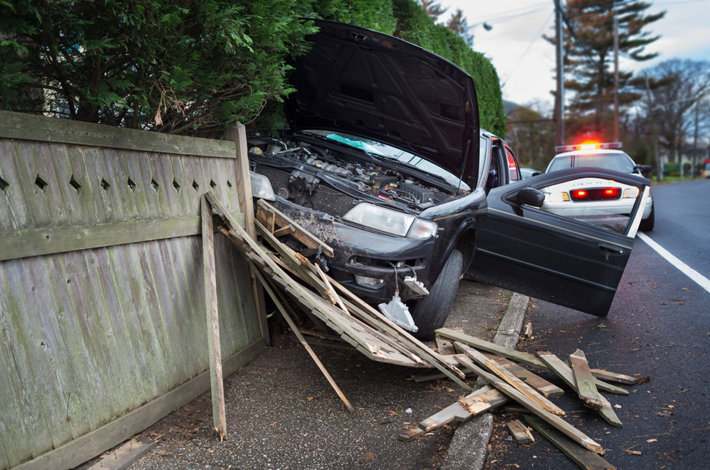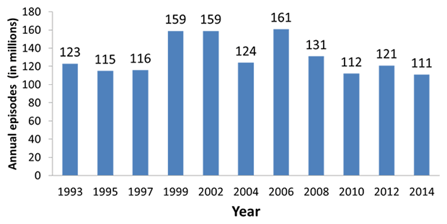Drunk Driving And Its Tragic Effects

Drunk driving is a serious issue in the United States. It is a tragic, heartbreaking fact that thousands of innocent motorists lose their lives every year because of a legal substance that dramatically reduces cognitive-motor function.
On the one hand, drunk driving fatalities are completely preventable, yet they still occur. Everyone knows you’re not supposed to drive drunk, yet this still happens.
It’s been proven that any degree of alcohol consumption immediately begins to slow reaction time and dull the senses. However, a blood alcohol content of .08 was set as the legal limit. But if any degree of alcohol consumption begins to reduce reflexes and negatively impact cognitive-motor function, why not make it illegal for one to have any blood alcohol content while driving a car?
A Look at the Statistics - Why the Rules Need to Change
The statistics on drunk driving in the United States are heart-rending. According to the CDC:

Every day, 29 people lose their lives in drunk driving crashes in the United States. That’s one death every 50 minutes, which is totally and completely preventable. The annual cost of alcohol-related crashes (fatal and nonfatal) totals more than $44 billion.
In 2016, 10,497 people lost their lives in traffic accidents that had an alcohol-impaired driver. That figure accounts for 28 percent of all traffic-related deaths in the United States. About 214 of those deaths involved children under the age of 14.
Law enforcement departments make a strong effort to crack down on drunk driving, but they can’t catch everyone who does this. According to the CDC, more than one million drivers are arrested for drunk driving each year, but that’s not even one percent of the total estimated 111 million drunk driving incidences that occur each year.
Drunk driving statistics among youth are going down. This is thought to be in large part due to steady and consistent efforts to inform and educate youth on the genuine dangers of drunk driving. In fact, in 2018, for the first time since reporting began over 20 years ago, less than 1,000 young people died in a drunk driving crash in the United States.
Any Amount of Alcohol Consumption Impairs Function - Why A Zero-Tolerance Policy is Needed
The United States Department of Transportation released some alarming information on just how much alcohol consumption affects an individual’s ability to operate a motor vehicle. The shocking revelation drawn from this info is that the .08 BAC “legal limit” is far too liberal in how much alcohol people can consume while still being able to drive a car legally.
According to the data:
- .02 Blood Alcohol Content. This level of inebriation occurs almost immediately after one begins drinking. The result is some loss of judgment, relaxation, slight body warmth, and a slightly altered mood. This is also when a decline in visual functions (rapid tracking of a moving target) begins. One may also experience a decrease in one’s ability to perform two tasks simultaneously (an ability that one clearly needs to drive a car).
- .05 Blood Alcohol Content. This level of inebriation often goes hand in hand with exaggerated behavior, a loss of small-muscle control, increasingly impaired judgment, significantly lowered alertness, reduced coordination, a reduced ability to track moving objects, more difficulty steering, and significantly reduced response to emergency driving situations.
- .08 Blood Alcohol Content. At this point of inebriation, muscle coordination becomes very poor; it becomes more challenging to detect danger, judgment wanes, self-control recedes, reasoning and memory are impaired, etc. This is also when concentration drops off significantly, processing capability reduces severely, and perceptions are impaired even more.
- .10 Blood Alcohol Content. At .10 BAC, there will be an evident deterioration of reaction time and control, slurred speech, poor coordination, and significantly slowed thinking. One will also experience a reduced ability to maintain lane position and brake appropriately.
What is clear from this analysis is that as soon as one begins consuming alcohol, the substance starts having a detrimental, impairing effect on the individual. This has been proven beyond a doubt. So why then does a certain level of inebriation still allow one a legal right to drive a vehicle?
This is the argument for a zero-tolerance policy. If policies were set in place that outlawed any degree of alcohol inebriation while driving a car, the overwhelming prevalence of drunk driving would recede, alcohol-involved car accidents would reduce, and lives would be saved.
Drunk Driving and Alcohol Addiction
As mentioned in the earlier statistics, the vast majority of drunk driving occurs on the part of people addicted to alcohol who regularly drink to excess. This information is helpful because we can narrow down the needed strategy and address the key demographic that is causing the majority of drunk driving.
Because drunk driving and alcohol addiction tend to correlate so much, it follows logically then that helping those who are addicted to alcohol get into drug and alcohol rehab centers would have the dual benefit of helping them overcome addiction and reducing drunk driving accidents at the same time.
Removing drunk driving is going to take a multi-pronged strategy. It will take strengthening policy and laws on the subject, and even introducing a zero-tolerance system in which no amount of blood alcohol content is appropriate for operating a vehicle. It’s going to take educating people on the genuine harm of driving under the influence and making sure they understand just how critically dangerous drinking and driving is. And last but not least, it’s going to take treating those who are addicted to alcohol.
If you know someone who is addicted to alcohol, please help them get into a drug and alcohol treatment center. Not only are alcohol addicts more likely to drive drunk, but they are also more likely to drive drunk multiple times. Each time an intoxicated person gets behind the wheel of a car, they put their own and others’ lives in jeopardy. Do not let your loved one do this. Contact Narconon today to take the first step towards helping your loved one get off of substances. You’re saving their life in doing so, and you’re saving the lives of other innocent motorists too.
Sources:
- https://www.cdc.gov/motorvehiclesafety/impaired_driving/impaired-drv_factsheet.html
- https://www.responsibility.org/alcohol-statistics/drunk-driving-statistics/
- https://www.nhtsa.gov/risky-driving/drunk-driving


 ®
®